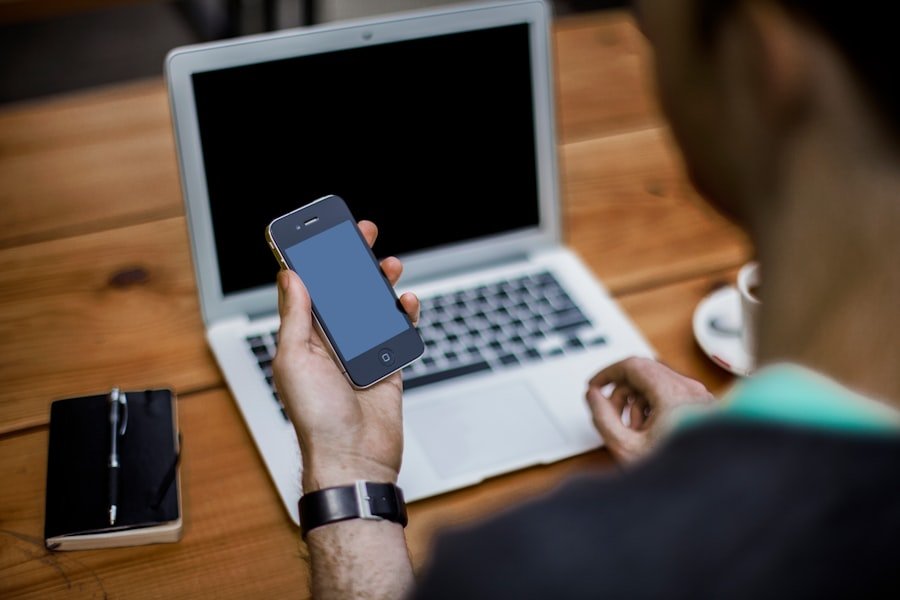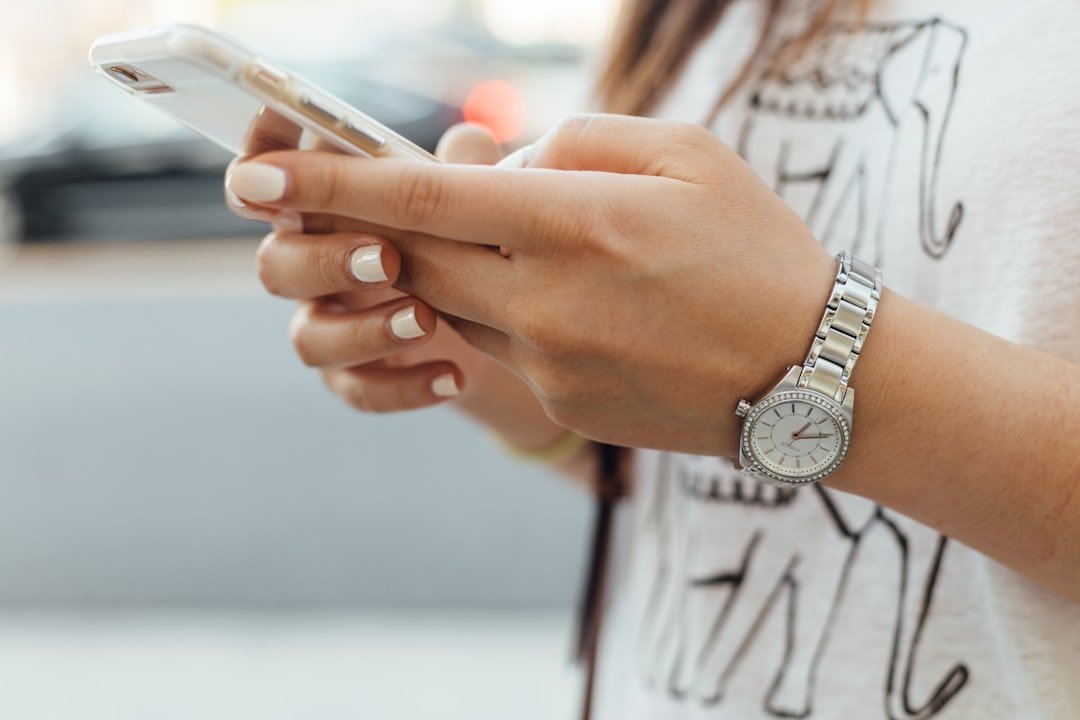Faxing from an iPhone presents a unique set of challenges that can hinder the user experience. One of the primary limitations is the inherent nature of fax technology itself, which relies on analog signals and dedicated phone lines. While modern smartphones, including the iPhone, are designed for digital communication, the traditional fax machine operates on a different wavelength, creating a disconnect.
This means that users cannot simply send a fax directly from their device without utilizing additional services or applications that bridge this gap. Furthermore, the quality of the fax can be compromised if the document is not scanned or converted properly, leading to potential miscommunication or loss of important information. Another limitation is the reliance on internet connectivity and third-party applications.
Unlike traditional fax machines that operate independently of internet access, faxing from an iPhone typically requires a stable internet connection to utilize online fax services or apps. This dependency can be problematic in areas with poor connectivity or when users are on the go. Additionally, many of these applications may have restrictions on file types or sizes, which can further complicate the process.
Users may find themselves frustrated when attempting to send larger documents or specific file formats that are not supported by their chosen app.
Key Takeaways
- Faxing from an iPhone has limitations such as the need for a third-party app and potential compatibility issues with certain file types.
- Different methods for faxing from an iPhone include using a fax app, email to fax, and online fax services.
- When choosing a fax app, consider factors such as cost, ease of use, and compatibility with your specific needs.
- Setting up and sending a fax from your iPhone involves selecting the document, entering the recipient’s fax number, and confirming the transmission.
- Costs associated with faxing from an iPhone may include subscription fees for fax apps or per-page charges for online fax services.
Exploring the different methods for faxing from an iPhone
Faxing through Dedicated Applications
One of the most popular ways to fax from an iPhone is through dedicated fax applications available on the App Store. These apps enable users to scan documents with their iPhone’s camera, convert them into a fax-friendly format, and send them directly to a recipient’s fax machine. Popular options like eFax, FaxFile, and MyFax offer user-friendly features that cater to different needs. Users can often sign up for free trials or pay-per-fax options, making it accessible for occasional users.
Faxing through Online Services
Another method involves using online fax services that operate through web browsers. These services typically require users to create an account and upload their documents directly to the platform. Once uploaded, users can enter the recipient’s fax number and send the document without needing to download an app. This method can be particularly useful for those who prefer not to install additional software on their devices or for users who need to send faxes infrequently.
Ensuring Security and Reputability
However, it is essential to ensure that the chosen service is reputable and secure, as sensitive information may be transmitted.
Choosing the right fax app for your needs

Selecting the right fax app for your iPhone can significantly impact your overall experience and efficiency when sending faxes. When evaluating different options, it is crucial to consider factors such as user interface, features, pricing, and customer support. A user-friendly interface can make the process of scanning and sending documents much smoother, especially for those who may not be tech-savvy.
Apps like eFax and HelloFax are known for their intuitive designs, allowing users to navigate easily through the various functions. Pricing structures also play a vital role in choosing a fax app. Some applications offer pay-per-fax options, which can be ideal for occasional users who do not want to commit to a monthly subscription.
Others may provide unlimited faxing for a flat monthly fee, which could be more cost-effective for businesses or individuals who frequently send documents. Additionally, it is essential to consider customer support options; having access to responsive support can be invaluable when encountering issues or needing assistance with specific features.
Setting up and sending a fax from your iPhone
| Step | Details |
|---|---|
| 1 | Open the app that you want to fax from and find the document that you want to send. |
| 2 | Look for the “Share” button or option within the app and select it. |
| 3 | Choose the option to “Fax” or “Send as Fax” from the sharing menu. |
| 4 | Enter the recipient’s fax number and any additional details, such as a cover page or message. |
| 5 | Review the fax details and make sure everything is correct before sending. |
| 6 | Press the “Send” button to send the fax from your iPhone. |
Setting up a fax app on your iPhone typically involves downloading the application from the App Store and creating an account. Once installed, users will need to grant the app permission to access their camera and files, enabling them to scan documents directly from their device. After setting up the app, users can begin the process of sending a fax by selecting the option to create a new fax.
This usually involves either taking a photo of a document or uploading a file from their device. Once the document is ready, users must enter the recipient’s fax number accurately. Many apps also allow users to add a cover sheet, which can be beneficial for providing context or additional information about the fax being sent.
After reviewing all details and ensuring everything is correct, users can hit send. The app will then process the document and transmit it to the recipient’s fax machine. Most applications provide confirmation notifications once the fax has been successfully sent, giving users peace of mind that their documents have reached their intended destination.
Understanding the costs associated with faxing from an iPhone
The costs associated with faxing from an iPhone can vary significantly depending on the method chosen and the frequency of use. For those who opt for dedicated fax apps, pricing models typically include pay-per-fax options or subscription plans. Pay-per-fax services charge users based on each document sent, which can be economical for infrequent users but may become costly if sending multiple faxes in a short period.
Conversely, subscription plans often provide unlimited faxing capabilities for a monthly fee, making them more suitable for businesses or individuals who require regular access to faxing services. In addition to app costs, users should also consider potential hidden fees associated with certain services. For example, some apps may charge extra for features such as international faxing or additional storage for sent documents.
It is essential to read through pricing details carefully before committing to any service to avoid unexpected charges later on. Furthermore, while many apps offer free trials or limited free usage, understanding how these limitations work can help users make informed decisions about which service best fits their needs.
Troubleshooting common issues when faxing from an iPhone

Connectivity Problems
One prevalent problem is related to connectivity; if the internet connection is unstable or slow, it can lead to failed transmissions or delays in sending documents. Users should ensure they are connected to a reliable Wi-Fi network or have sufficient cellular data before initiating a fax.
Temporary Glitches and Document Formatting
If issues persist, restarting the app or device may help resolve temporary glitches. Another common issue involves document formatting and compatibility. Users may find that certain file types are not supported by their chosen fax app, leading to frustration when trying to send important documents.
Preventing Issues with File Formats and Document Quality
To mitigate this problem, it is advisable to check the app’s specifications regarding acceptable file formats before attempting to send a fax. Additionally, ensuring that scanned documents are clear and legible can prevent issues related to poor quality that might result in unreadable faxes.
Tips for ensuring the security of your faxed documents
When transmitting sensitive information via fax from an iPhone, ensuring document security is paramount. One effective way to enhance security is by using reputable fax apps that prioritize encryption and data protection. Many modern applications employ end-to-end encryption protocols that safeguard documents during transmission, making it difficult for unauthorized parties to intercept sensitive information.
Before selecting an app, users should research its security features and read reviews regarding its reliability in protecting user data. Another important tip is to avoid sending highly sensitive information unless absolutely necessary. If possible, consider alternative methods of communication that offer stronger security measures, such as encrypted email services or secure file-sharing platforms.
Additionally, always double-check recipient information before sending a fax; sending confidential documents to the wrong number can lead to significant privacy breaches. Implementing these practices can help ensure that sensitive information remains protected throughout the faxing process.
Exploring alternatives to faxing from an iPhone
As technology continues to evolve, many alternatives to traditional faxing have emerged that may better suit modern communication needs. One popular alternative is email; sending documents via email allows for quick transmission without relying on outdated technology like fax machines. Many businesses have shifted towards digital communication methods due to their efficiency and ease of use.
Additionally, email services often provide built-in security features such as encryption and password protection. Another alternative worth considering is cloud-based document sharing platforms like Google Drive or Dropbox. These services enable users to upload documents and share them securely with others through links or shared folders.
This method eliminates the need for physical transmission altogether while providing robust collaboration tools that allow multiple users to access and edit documents in real time. As organizations increasingly prioritize digital solutions over traditional methods like faxing, exploring these alternatives can lead to more efficient workflows and improved communication strategies.
If you are looking for more information on how to fax from an iPhone, you may want to check out the article on AppsSoftwares.com. They offer a variety of resources and guides on how to use different apps and software on your mobile device. You can find more helpful tips and tricks by visiting their website here.
FAQs
What is faxing from an iPhone?
Faxing from an iPhone refers to the ability to send and receive faxes using a mobile application on an iPhone device.
Can you fax from an iPhone?
Yes, you can fax from an iPhone using various mobile applications that are specifically designed for faxing.
How do you fax from an iPhone?
To fax from an iPhone, you can use a mobile fax application that allows you to create and send faxes directly from your device. These applications typically require a subscription or payment for usage.
What are the benefits of faxing from an iPhone?
The benefits of faxing from an iPhone include the convenience of being able to send and receive faxes on the go, without the need for a traditional fax machine or landline.
Are there any limitations to faxing from an iPhone?
Some limitations of faxing from an iPhone may include the need for a stable internet connection and potential restrictions on the number of faxes that can be sent or received based on the chosen mobile fax application.
